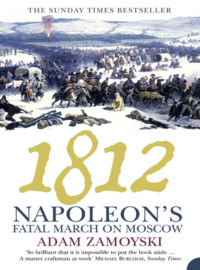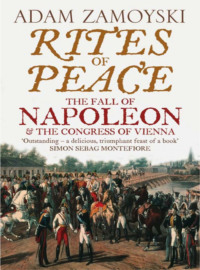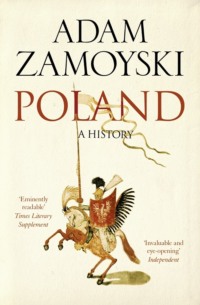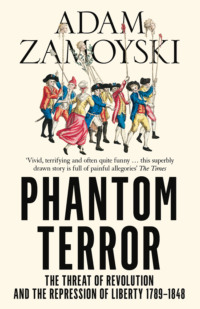
Полная версия
Warsaw 1920
‘Here were about 28,000,000 people who had for four years been ravished by four separate invasions during this one war, where battles and retreating armies had destroyed and destroyed again,’ wrote Herbert Hoover, who arrived in Poland with his relief mission in January 1919. ‘In parts there had been seven invasions and seven destructive retreats. Many hundreds of thousands had died of starvation. The homes of millions had been destroyed and the people in those areas were living in hovels. Their agricultural implements had been depleted, their animals had been taken by armies, their crops had been only partly harvested. Industry in the cities was dead from lack of raw materials. The people were unemployed and millions were destitute. They had been flooded with roubles and kronen, all of which were now valueless. The railroads were barely functioning. The cities were almost without food; typhus and other diseases raged over whole provinces.’4
This meant Poland was heavily dependent on the support of her western allies for everything from supplies of food to machine-gun bullets. And while they were generous with this, they were not in a position to help her militarily, even if the will had been there. Lenin guessed that it was not. He and his comrades also believed that history was on their side and that no ‘bourgeois’ government such as that currently running Poland could possibly stand up to the force of Bolshevism.
Lenin ordered the formation of an Army of the West, which was instructed to carry out ‘reconnaissance in depth’ in the wake of the evacuating German troops, an operation code-named ‘Target Vistula’. On 5 January 1919, after a short battle with a small unit of local Polish irregulars, it occupied Wilno (Vilnius), capital of the erstwhile Grand Duchy of Lithuania, an integral component of the pre-partition Polish state. In February a Soviet Socialist Republic of Lithuania-Byelorussia was set up under Russian protection, with its capital at Minsk, and a Soviet government-in-waiting for Poland was constituted in Russia under the leadership of the Polish communist Józef Unszlicht. The III International of the Communist Party, or Comintern, was scheduled to meet in Moscow on 4 March to watch over the imminent triumph of revolution throughout the world.
An encouraging portent was the emergence that same month of a Soviet government in Hungary under Béla Kuhn, a Hungarian Jew who had become a Bolshevik while a prisoner of war in Russia. But this was short-lived and did not herald further successes. The political situation in Germany stabilized in the spring of 1919, and democratic elections had gone smoothly in Poland, whose ‘bourgeois’ government was proving unexpectedly vigorous. So was its head of state. As a native of Wilno, Pilsudski could not stomach its occupation by the Bolsheviks, so he gathered together all available reserves and in a daring operation on 20 April Polish troops expelled the Red Army, forcing them back along the whole front and over the next three months occupying most of formerly Polish Byelorussia, along with the city of Minsk.
Pilsudski was determined that while the area lying between Poland and Russia did not necessarily have to belong to Poland, it must be denied to Russia. His favoured scheme was a federation of Poland with democratic Lithuanian and Ukrainian states. This was something of a forlorn hope, since the Lithuanian nationalists who would have been his natural partners were adamant that the whole territory of what had been the Grand Duchy of Lithuania (which included Wilno and all of Byelorussia) be given to them as a precondition of any talks, while the Ukrainians were split between pro-Polish and anti-Polish factions, as well as a variety of Pro-Russian, nationalist and communist groups. But he hoped that some kind of union might yet emerge, and in the meantime determined to occupy as much of the territory of the pre-partition Polish state as possible in order to create a ‘safety cushion’ and to be in a position of strength when peace negotiations did begin.
The Russian Army of the West had never been intended to fight its way across Poland, only to fill any available power-vacuum. And at this precise moment, the vacuum was behind, not in front of, it. Three White armies, lavishly equipped by the Entente, were challenging the Bolsheviks, from the Baltic in the west, Siberia in the east and Ukraine in the south. The Volunteer Army of Southern Russia, commanded by General Anton Denikin, was beginning to pose a real threat as it began its march on Moscow, inflicting defeat after defeat on the Red Army.
Poland, Germany and world revolution would have to wait. Lenin desperately needed what he called a ’peredyshka’, a breather, in order to marshal all available forces against this new threat. He therefore decided to repeat the previous year’s tactic of buying time with peace, and agreed to secret talks suggested by Pilsudski.5
Pilsudski had no illusions about the Bolsheviks. He had personal experience of collaborating with them (he had, at the age of nineteen, supplied Lenin’s elder brother with the explosives for the bomb which he had hurled at Tsar Alexander III), and they included a number of Polish socialists with whom he had had close dealings. He was well acquainted with their real aims, and the means they used to achieve them.
But Poland also needed a breather. Her army, a motley collection of units left over from the late war, was badly overstretched -by sporadic fighting in various areas disputed with Germany and not yet allocated by the peacemakers in Paris, by a stand-off with the Czechs over Teschen (Cieszyn), and by a running battle with Ukrainian nationalists over Lwów. More to the point, Pilsudski perceived Denikin as no less of a threat than did Lenin.
The Whites enjoyed the confidence of the Entente, which had just given them millions of pounds’ worth of equipment, and had even sent British troops to Russia in support. It followed that if they were victorious Russia would resume her former place as one of the four leading Allies. All Polish territorial claims, indeed her continued existence, would then be entirely conditional on Russia’s goodwill.
Pilsudski was being urged by the Allies, and most energetically by the British Secretary of State for War, Winston Churchill, to press on into Russia in support of the Whites. But whatever he may have thought of Lenin and the Bolsheviks, he preferred to deal with them than with a White Russian government, particularly as Denikin had made clear that he viewed the re-emergence of an independent Poland with distaste and regarded most of her territory as Russian. Pilsudski therefore concluded a secret armistice with Lenin which allowed the latter to withdraw some 40,000 men from the Polish front and redeploy them against Denikin.6
Within weeks the Red Army was surging southward, triumphantly sweeping Denikin’s forces before it. This kind of reversal was characteristic of the Russian Civil War, in which a minor setback would precipitate a retreat that snowballed as technical breakdown, the devastated terrain, the weather, the local population, disease, desertion and fear of political reprisals all conspired to destroy the fabric of the retreating force.
But to politicians and public opinion in the West, it suggested that the Bolsheviks enjoyed the support of the masses and that they were militarily superior, which took away much of the appetite for further intervention in Russia. It also raised fears of unrest at home, fuelled by rose-tinted sympathy for the brave socialist experiment supposedly taking place in Russia. Only the more determined anti-Bolsheviks and the French military pressed for continued intervention.
The British Prime Minister, David Lloyd George, who had been one of the most enthusiastic advocates of crushing the Bolsheviks by force, now declared that Russia would be saved by commerce, affirming that ‘the moment trade is established with Russia, communism will go’. Sensing an opportunity, Lenin launched a peace offensive, suggesting negotiations with all parties and offering Poland generous terms. Neither Lloyd George nor the French premier Georges Clemenceau had any intention of making peace with Bolshevik Russia, which they viewed as a dangerous example and a possible source of contagion for the working classes of their own countries. But having failed to destroy the Bolsheviks by military means, they were hoping to contain them. They therefore urged Poland and other states neighbouring Russia to take up the offer. As a result, Poland and Russia entered into official negotiations.7
Neither side was in good faith. While the Poles were being publicly urged by Lloyd George and Clemenceau to make peace, they were receiving conflicting messages from other members of the British government and from the French general staff. When Clemenceau resigned, to be replaced by Alexandre Millerand in January 1920, the signals reaching Poland from France were unmistakably warlike. Albeit a socialist himself, Millerand saw his priority as stamping out the strikes paralysing France, and imposing order. This suited Pilsudski, who continued to consolidate his own military position. On 3 January he captured the city of Dunaburg (Daugavpils) from the Russians and handed it over to Latvia, whose government was decidedly anti-Bolshevik and pro-Polish, thereby cutting Lithuania off from Russia. He carried out a number of other operations aimed at strengthening the Polish front, and delayed the peace talks by suggesting venues unacceptable to the Russians.
Lenin was not interested in peace either. He mistrusted the Entente, which he believed to be dedicated to the destruction of the Bolshevik regime in Russia. He saw Pilsudski as their tool, and was determined to ‘do him in’ sooner or later. He feared a Polish advance into Ukraine, where nationalist forces threatened Bolshevik rule, and was convinced the Poles were contemplating a march on Moscow. Russia was isolated and the Bolsheviks’ grip on power fragile. At the same time, the best way of mobilizing support was war, which might also allow Russia to break out of isolation and could yield some political dividends.
Germany beckoned. The terms of the Treaty of Versailles, signed the previous summer, added humiliation to the already rich mix of discontent affecting German society, and even the most right-wing would have welcomed a chance of overturning the settlement imposed by it. The appearance of a Red Army on its borders would be viewed by many there as providential.
In the final months of 1919 Lenin increased the number of divisions facing Poland from five to twenty, and in January 1920 the Red Army staff’s chief of operations Boris Shaposhnikov produced his plan for an attack on Poland, scheduled provisionally for April. This was accepted by the Politburo on 27 January, although the Commissar for War Lev Davidovich Trotsky and the Commissar for Foreign Affairs Georgii Chicherin warned against launching an unprovoked offensive. Accordingly, Chicherin publicly renewed his offer of peace to Poland the following day. Two weeks later, on 14 February, Lenin took the final decision to attack Poland, and five days after that the Western Front command was created.8
Конец ознакомительного фрагмента.
Текст предоставлен ООО «ЛитРес».
Прочитайте эту книгу целиком, купив полную легальную версию на ЛитРес.
Безопасно оплатить книгу можно банковской картой Visa, MasterCard, Maestro, со счета мобильного телефона, с платежного терминала, в салоне МТС или Связной, через PayPal, WebMoney, Яндекс.Деньги, QIWI Кошелек, бонусными картами или другим удобным Вам способом.









